Jasmine, with its exquisite and fragrant flowers, is every gardener's favourite. Have you ever thought about growing more jasmine plants effortlessly? Well, you're in for a treat.
In this article I will explain a straightforward method – growing jasmine cuttings in water, particularly Arabian Jasmine. Whether you're a seasoned gardener or just starting out, this technique is user-friendly and rewarding. But, how to grow Jasmine cuttings in water?
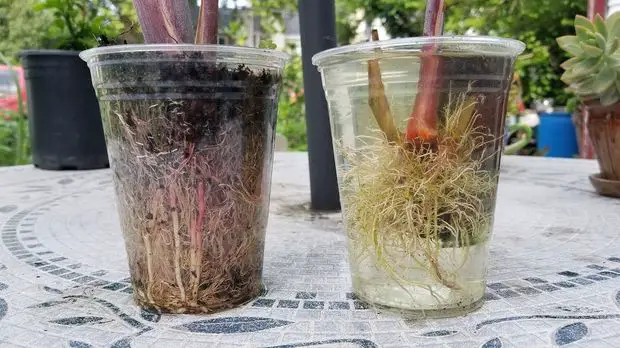
To grow and root Sambac jasmine in water, start by taking 6-8 inch stems from semi-established plants. Cut just below a node at the base and above the top node. Remove all but the top three leaves. Place the cuttings in a water-filled jar, changing the water every two weeks for three months. Successfully rooted cuttings can then be transplanted into pots, with or without rooting hormone powder.
Bear in mind the this technique can be applied to any Jasmine really and for the sake of this article we will be focusing on Arabian Jasmine!
Arabian Jasmine, aka, Sambac Jasmine, is an everlasting perennial tropical vine, which is most commonly known for its exquisite and intoxicating fragrance throughout the warm summer months.
That beautiful scent is frequently released later in the evening to add some romantic vibes to your garden on summer nights! Sambac Jasmine, usually, grows optimally in 8B zones, under full direct sunlight conditions and it thrives in good quality, loose, humus-rich and well-drained soil.
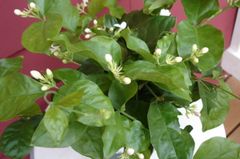
This Jasmine variety doesn’t require a very fancy water requirement, however, it does require rich and fertilised soil, that drains well, in order for flowers to grow. With regards to its exquisite flowers, they are world-wild famous, not only for their fragrance but also for their culinary uses, such as being commonly used for tea in China or for their cosmetic uses to make perfumes or body lotions.
Those flowers are born in clusters of 3-12, where the buds tend to fade from a pale pink beautiful tone to pure wax, glossy flowers, usually composed of 4 petals and reaching a size of 1-2 inches in size.
When and how to propagate Jasmine? General directions
The best time to propagate jasmine is in the spring or early summer when the weather is warm, typically when the temperature consistently reaches around 70 to 75 degrees Fahrenheit (21 to 24 degrees Celsius). It's just like how you plan a picnic on those lovely, sunny days. Jasmine cuttings prefer these mild conditions, as it gives them the best chance to root and grow.
To do it, take a softwood cutting from a healthy jasmine plant. Softwood cuttings are like the young, fresh recruits of the plant world. They root quickly and have a better chance of success when it's comfortably warm outside. Make sure your cutting is about 4-6 inches long, remove the lower leaves, and dip the cut end in rooting hormone (a bit like plant vitamins) to help it along.
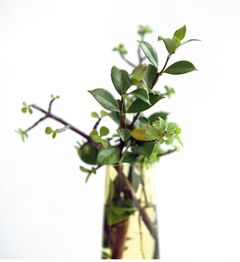
Then, plant your cutting in a well-draining potting mix, water it gently, and cover it with a plastig bags or a plastic dome to create a mini greenhouse. Place it in a bright spot with a temperature between 70 to 75 degrees Fahrenheit, but not in direct sunlight. Keep the soil consistently moist, and soon enough, you'll have your very own little jasmine plant ready to bring some sweet scent to your garden or home.
How to grow Arabian Jasmine from cuttings. Jasmine Sambac rooting in water
Before you get to propagate your jasmine plant, there are a couple of key points to know and nail down in order to reach success in the growth of our new stems. The very first thing you need to get right is to make sure you use semi-ripe cuttings, particularly from more mature established plants. In order for you to get the best results, the second thing you need to do is to get those cuttings by snipping them below a node of the stems you are getting them from.
It is best to use a really sharp knife and aim for semi-hard stems, then, proceed to remove most of the leaves, especially, the most dried ones but do leave a couple of those leaves at the top of these cuttings, also remove old buds and flowers too, if those stems had some from the previous season.
I can totally recommend using sharp Pruning Shears to ensure you give those cuttings the best angle snip.
It is recommendable to do this at the start of the spring season, which is, when the plan really starts coming alive, as Sambac jasmine is a perennial Sambac jasmine is a perennial plant that goes dormant in the winter time, so we want to avoid trying to propagate our plant at that time.
A third key point is, to make sure you get serval cuttings, not just one or two as, propagating jasmine in water can be challenging, so make sure you get about 10 cuttings every time, in order to obtain two or three successful ones.
The very next step is, to prepare a couple of transparent glass jars or containers filled up with water until about halfway. Place the cuttings in those jars (make sure you dry up the bottoms of the cuttings from any extra sap that might have come out when snipping them).
Place those jars in a location where it is somewhat humid, where there is enough indirect and bright light, but keep them away from direct burning sunlight. Grab a water spray bottle and keep the stems moist by spraying them every two days or so.
Change the water every week, when at that time, it will look pretty murky and cloudy. Repeat this process for about three months, and you should start seeing a long white root coming through when it is time to place it into a small soiled pot, where it will be resting for the entire winter.
Then, in the springtime, it will planted properly in a bigger pot or outdoor soil. Propagating Sambac jasmine in water is an inexpensive, fun and mindful process when it comes to expanding your Arabian jasmine stocks, as gardening can be pretty expensive when you look at more fancy techniques!
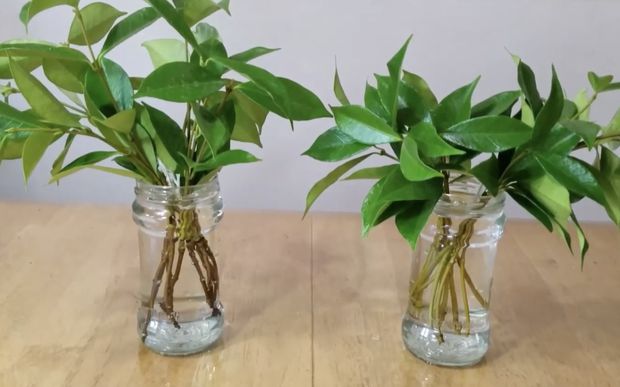
How to propagate jasmine without rooting hormone?
I get this question constantly and it is a good question, as sometimes you have successfully achieved your cuttings to develop some roots in water after three months, but they are looking a bit sad and unwell to cope with being planted in the soil.
This is not very well known, however, it is highly effective to give your cuttings grown in water, an extra push for them to grow strong in the soil. The way this works is, once you have successfully obtained a rooted cutting that has spent about three months in water (just like we have explained above), you will need to dip the ends of the stems and the base of the root, in natural organic like hormone rooting powder.
Check out how to plant jasmine without rooting hormone to learn more about it!
Examples of these natural agents are honey water, aspirin powder, cinnamon powder, and fresh aloe vera gel. Once you have dipped those rooted cuttings in your agent of choice (I personally prefer aspiring powder, as I get better results using that versus honey) then, place a hole in the sand of your pot and place that dipped cutting in it, about three inches deep.
Then, press the sand firmly against the stem but don’t push the cutting down the soil too hard, otherwise, you may damage and destroy it. You could actually place two to three cuttings in the same pot as you preferred.
After you have done this, place the pot in a dark polyethylene bag, don’t water the pot anymore and seal the bag properly to then place it in a warm place with shade. After about 10 days, open the bag, add a few drops of water in the soil and spray the plant once or twice before closing the bag again for the next 10 days.
Repeat the process for about 10 to 12 weeks when you will be able to see a pretty well-rooted solid pot. Now, your little Arabian jasmine pot is ready to be transplanted to a bigger container or a small area in your outdoor garden. Quick tips here for success are, to use river sand that is bacteria free and drains pretty well.
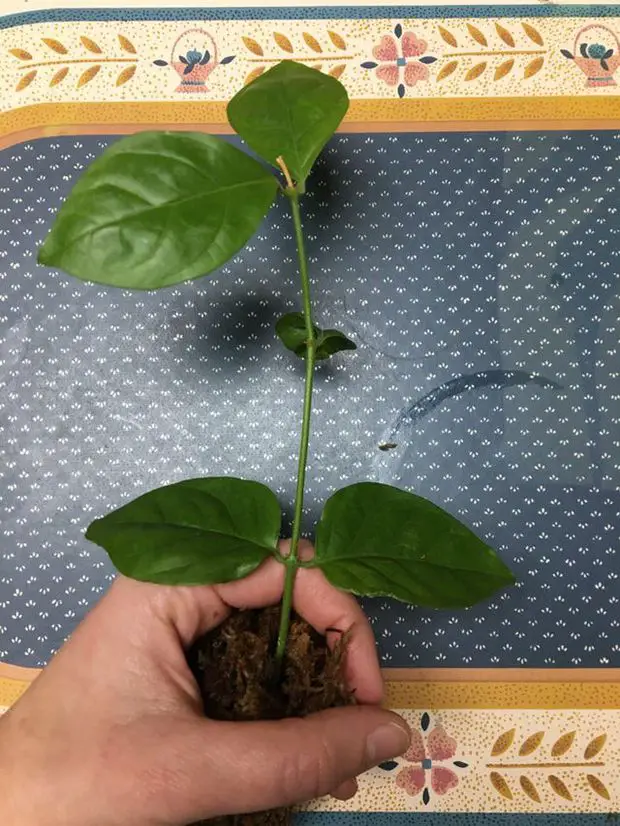
Also, before you start, as you move forward in the propagation process, it is crucial that you sterilise your pruning tools by rinsing them with isopropyl alcohol or diluted bleach to clean them thoroughly and kill all the bacteria.
In addition, when starting with those cuttings to put in water, make sure you don’t snip cuttings longer than 7-8 inches from around 8 months-old plants as if you pick really old plants, that success rate goes down a fair bit.
In contrast, if you choose to use hormone-rooting powder, the protocol here is basically the same. Right after your Sambac jasmine has rooted from being in the water for about three months, the next step is to wet and dip those cuttings in hormone rooting powder, which is basically a chemical called Indole-3-butyric acid, which is the natural agent that promotes the rooting growth in plants.
Posteriorly, place it in the potting or standard soil. My go -to and the one that I strongly recommend is using Miracle-Gro Potting Mix.
It is key to be very gentle when you do this not to add too much hormone rooting powder and to push it too hard in the soil as the roots will wilt and the cutting will get damaged. The triumph of getting to grow successful baby Sambac jasmine cuttings is, to provide optimal levels of humidity and light/darkness.
It is good practice to cover the little pots with dark opaque plastic bags and then place them in a location where they are going to be hit by indirect sunlight. After about 10 days to 2 weeks, you should remove that plastic bag for about 24 hours, so that your cuttings get some fresh air and dry up a little bit.
Do not overwater these cuttings until the rooting system is well developed and attached to the soil, which will take about 6 weeks, otherwise, that soil won’t drain properly and the roots will wilt and grow nasty mould on them and this will ultimately lead to your cuttings to die.
Continue to do the bag-changing process until you start noticing the first baby leaves coming through at the top of those cuttings, the time when you will be placing these pots outside to get more indirect sunlight for an extra two weeks before planting them in the soil or a bigger pot.
How to care for jasmine after rooting. Top tips
Caring for jasmine after it has taken root is essential to ensure its ongoing health and the continued abundance of its blossoms. After transplanting your rooted jasmine cuttings into a suitable potting mix, you'll want to place them in an environment that mimics their natural habitat.
Jasmine thrives in bright, indirect sunlight, as it encourages prolific flowering. Whether indoors or outdoors, aim for a location that receives at least six hours of such light daily. For indoor cultivation, a sunny south or west-facing window is often ideal.
Temperature plays a crucial role in jasmine's well-being. Although it generally favors cooler conditions, it tends to thrive best in climate zones 7 through 10, where temperatures consistently stay above 60 degrees Fahrenheit. Maintaining these mild conditions ensures optimal growth and flower production for your jasmine plants.
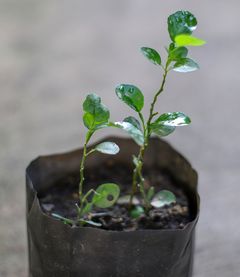
Watering and fertilizing with optimum Fertilizer are crucial aspects of jasmine care. During the active growing season, which typically spans from spring to summer, it's important to keep the soil consistently moist.
Water your jasmine when the top inch of soil feels dry to the touch. Avoid overwatering, as this can lead to root rot. In the fall and winter, allow the plant to dry out slightly between waterings, only providing moisture when the top half-inch of soil feels dry.
Additionally, apply a standard liquid fertilizer every two weeks during the growing season to promote healthy growth and abundant blooms, reducing fertilization during the plant's natural rest period in the cooler months. Regular pruning to maintain shape and control unruly growth, along with diligent pest and disease management, will ensure your jasmine thrives, gracing your space with its exquisite fragrance and charming flowers.
If you're looking to expand your jasmine garden, remember that propagation through cuttings, seeds, or air-layering stems offers an easy and rewarding way to enjoy more of this delightful plant. Whether you choose cuttings or air-layering, in just one month, you can have a new jasmine plant ready to root, further enhancing the beauty and fragrance of your garden or home.
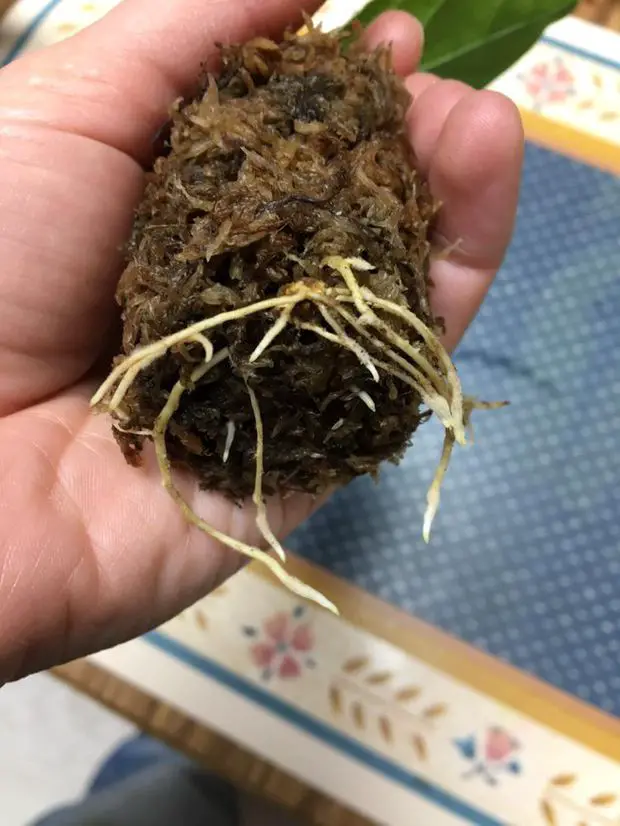
Final thoughts
There you go! now you know the best tips to successfully propagate Jasmine, particularly Arabian ( Sambac) jasmine in water. Now you are familiar with the whole process from snipping the stems from your older plant to the end of the process when the cuttings are ready to be planted in bigger pots or outdoor areas.
